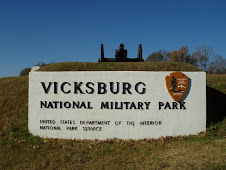Over 50 men and women have tested or are in the process of testing at 23andMe as part of our VICK and Allied Families DNA Project. Two more Vick descendants told me they were ordering the Full Edition 23andMe test today.
Family Tree DNA has announced it is going to provide a competitive product to 23andMe’s Relative Finder. FTDNA has named its tool Family Finder. Because almost all of our VICK Y-DNA Surname Project members tested at FTDNA, and we have had a great experience with FTDNA, we definitely have to pay attention to what FTDNA is doing. To get an idea of how Family Finder compares to Relative Finder, I ordered a Family Finder test. I am looking forward to using the tools Family Finder includes for managing projects. Hopefully 23andMe will offer similar tools since we don’t have any way to share our project results today except by transferring information from e-mailed screenshots to a spreadsheet and then sharing the spreadsheet. Just getting the screenshots is difficult. Not surprisingly, many project members don’t know how to make a screenshot or don’t have the time or interest to take them.
From the discounts 23andMe gave genetic genealogists last September 23andMe has a great head start on building an ancestry database, but with FTDNA’s very large surname project structure and all those unpaid project administrators extolling the virtues of FTDNA (and thereby steering project members to test at FTDNA), it may not take long for FTDNA to catch up in an important metric to genetic genealogists – a large database of customers anxious to compare pedigrees. If FTDNA was to follow deCODEme’s model of allowing 23andMe customers to transfer results for free, FTDNA might leapfrog 23andMe’s ancestry business.
While short of a full project management capability I have often wondered why 23andMe didn’t do something very simple like indicate on Relative Finder that there is more than one person in the 23andMe database who shares the same segment. 23andMe could then have a second level of contact request where each of the matching people could opt in to group sharing of results. It would seem like that little change could increase the chance that two of the people would have pedigrees they could use to solve the puzzle for the whole group. Solving the puzzle for the whole group might generate more enthusiasm about Relative Finder. It would be a far cry from a project management tool, but it would be at least a start.
I suspect the outcome of the Relative Finder versus Family Finder competition will make a good Harvard Business School case study. Hopefully, the outcome of the competition between the two companies will lead to the best product for genetic genealogists.
Subscribe to:
Post Comments (Atom)




No comments:
Post a Comment